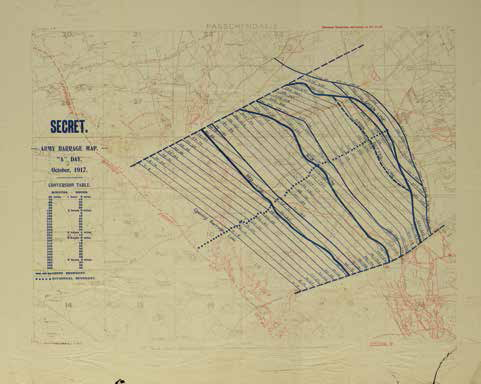Passchendaele
On 12 October 1917, an offensive by New Zealanders at Passchendaele (Flanders, Belgium) cost the lives of 845 men, and left more than 2700 wounded. In terms of lives lost on a single day, it was the greatest disaster in New Zealand history.


The above map of Passchendaele shows the creeping artillery barrage scheduled to support the advancing troops. As the shelling was meant to land just in front of the troops as they moved forward, timing was critical. However the "near-impossibility of bringing the guns forward through the quagmire, or stabilising those that were in position" meant the planned barrage was ineffectual. It failed to destroy the barbed wire or the German pillboxes, and diminished in intensity as it moved forward – Howitzer shells plunged into wet ground and exploded harmlessly. As a result, German shelling and their machine guns, still largely intact, cut through the troops.